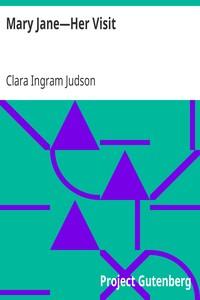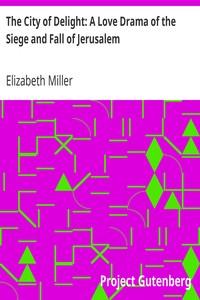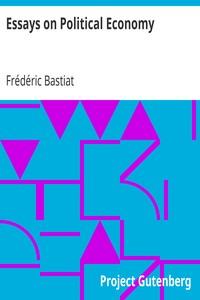|
|
Read this ebook for free! No credit card needed, absolutely nothing to pay.Words: 82875 in 16 pages
This is an ebook sharing website. You can read the uploaded ebooks for free here. No credit cards needed, nothing to pay. If you want to own a digital copy of the ebook, or want to read offline with your favorite ebook-reader, then you can choose to buy and download the ebook.

: A Short History of Scotland by Lang Andrew - Scotland History Children's History; United Kingdom@FreeBooksTue 06 Jun, 2023 A SHORT HISTORY OF SCOTLAND If we could see in a magic mirror the country now called Scotland as it was when the Romans under Agricola crossed the Border, we should recognise little but the familiar hills and mountains. The rivers, in the plains, overflowed their present banks; dense forests of oak and pine, haunted by great red deer, elks, and boars, covered land that has long been arable. There were lakes and lagoons where for centuries there have been fields of corn. On the oldest sites of our towns were groups of huts made of clay and wattle, and dominated, perhaps, by the large stockaded house of the tribal prince. In the lochs, natural islands, or artificial islets made of piles , afforded standing-ground and protection to villages, if indeed these lake- dwellings are earlier in Scotland than the age of war that followed the withdrawal of the Romans. The natives were far beyond the savage stage of culture. They lived in an age of iron tools and weapons and of wheeled vehicles; and were in what is called the Late Celtic condition of art and culture, familiar to us from beautiful objects in bronze work, more commonly found in Ireland than in Scotland, and from the oldest Irish romances and poems. Agriculture was practised, and corn was ground in the circular querns of stone, of which the use so long survived. The women span and wove the gay smocks and darker cloaks of the warriors. Of the religion, we only know that it was a form of polytheism; that sacrifices were made, and that Druids existed; they were soothsayers, magicians, perhaps priests, and were attendant on kings. Such were the people in Alba whom we can dimly descry around Agricola's fortified frontier between the firths of Forth and Clyde, about 81-82 A.D. When Agricola pushed north of the Forth and Tay he still met men who had considerable knowledge of the art of war. In his battle at Mons Graupius , his cavalry had the better of the native chariotry in the plain; and the native infantry, descending from their position on the heights, were attacked by his horsemen in their attempt to assail his rear. But they were swift of foot, the woods sheltered and the hills defended them. He made no more effectual pursuit than Cumberland did at Culloden. Agricola was recalled by Domitian after seven years' warfare, and his garrisons did not long hold their forts on his lines or frontier, which stretched across the country from Forth to Clyde; roughly speaking, from Graham's Dyke, east of Borrowstounnis on the Firth of Forth, to Old Kilpatrick on Clyde. The region is now full of coal-mines, foundries, and villages; but excavations at Bar Hill, Castlecary, and Roughcastle disclose traces of Agricola's works, with their earthen ramparts. The Roman station at Camelon, north-west of Falkirk, was connected with the southern passes of the Highland hills by a road with a chain of forts. The remains of Roman pottery at Camelon are of the first century. Two generations after Agricola, about 140-145, the Roman Governor, Lollius Urbicus, refortified the line of Forth to Clyde with a wall of sods and a ditch, and forts much larger than those constructed by Agricola. His line, "the Antonine Vallum," had its works on commanding ridges; and fire-signals, in case of attack by the natives, flashed the news "from one sea to the other sea," while the troops of occupation could be provisioned from the Roman fleet. Judging by the coins found by the excavators, the line was abandoned about 190, and the forts were wrecked and dismantled, perhaps by the retreating Romans. After the retreat from the Antonine Vallum, about 190, we hear of the vigorous "unrest" of the Meatae and Caledonians; the latter people are said, on very poor authority, to have been little better than savages. Against them Severus made an expedition indefinitely far to the north, but the enemy shunned a general engagement, cut off small detachments, and caused the Romans terrible losses in this march to a non- existent Moscow. Not till 306 do we hear of the Picts, about whom there is infinite learning but little knowledge. They must have spoken Gaelic by Severus's time , whatever their original language; and were long recognised in Galloway, where the hill and river names are Gaelic. The later years of the Romans, who abandoned Britain in 410, were perturbed by attacks of the Scoti from Ireland, and it is to a settlement in Argyll of "Dalriadic" Scots from Ireland about 500 A.D. that our country owes the name of Scotland. To the Scots, through St Columba, who, about 563, settled in Iona, and converted the Picts as far north as Inverness, we owe the introduction of Christianity, for though the Roman Church of St Ninian , at Whithern in Galloway, left embers of the faith not extinct near Glasgow, St Kentigern's country, till Columba's time, the rites of Christian Scotland were partly of the Celtic Irish type, even after St Wilfrid's victory at the Synod of Whitby . Free books android app tbrJar TBR JAR Read Free books online gutenberg More posts by @FreeBooks
: Mary Jane—Her Visit by Judson Clara Ingram White Frances Illustrator - Girls Juvenile fiction; Country life Juvenile fiction; Grandparents Juvenile fiction@FreeBooksTue 06 Jun, 2023

: The City of Delight: A Love Drama of the Siege and Fall of Jerusalem by Miller Elizabeth Leyendecker Frank X Illustrator - Jerusalem History Siege 70 A.D. Fiction@FreeBooksTue 06 Jun, 2023
|
Terms of Use Stock Market News! © gutenberg.org.in2025 All Rights reserved.






